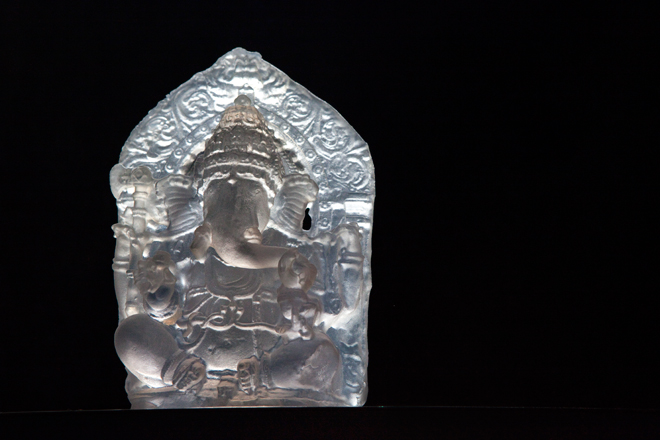Wired reports on a Scanathon that occurred last week at San Francisco’s Asian Art Museum. An invited group of artists, 3D enthusiasts, and Autodesk innovators pored through the museum photographing a number of prominent objects and rendering them as scale replicas using rendering software and 3D printing.
Last week, with the San Francisco Asian Art Museum closed to the public, Christian Pramuk baby-stepped his way in a half-circle around Standing crowned Buddha with four scenes of his life, using a DSLR to snap upward of 40 photos of the thousand-year-old stone sculpture.
Pramuk’s shots weren’t just for photography, though. He was using 123D Catch — the free software he oversees as a product manager for Autodesk — to create a 3-D digital rendering of the Buddha as part of an informal collaboration between Autodesk and the museum.
“Having people come and actually re-interpret these ancient artifacts in a different way is actually really in line … with our vision,” said Janet Brunckhorst, the museum’s manager of web and digital media.
“It’s the equivalent of picking it up and looking at it, without having to touch [the original], which is huge,” said Gian Pablo Villamil, as his MakerBot Replicator printed a miniature of Nandi the Bull, based off his capture of a 4-foot-long stone sculpture.
Pramuk also showed off an iPhone case, based on Scene from the epic Ramayana: Kumbhakarna battles the monkeys. Noticing that the dimensions of the four-foot stone relief were proportional to those of an iPhone, he captured it, modeled it, and used MeshMixer (another Autodesk software) to stitch it to an existing plan for an iPhone case.
Image: Christian Pramuk
123D Catch works a little like the panoramic function on a digital camera, but with a lot more math. Available as PC software or iOS app, the program uses reference points in the photos to pinpoint the location where each photo was taken. Then it knits the images into one 3-D model and fills in missing parts based on surrounding areas, though manual tweaks to remove background noise are sometimes necessary.
The group even talked about using 123D Catch to catalogue incoming art, and to share art that gets rotated off display.
“We had photographs of this yesterday; now we have a physical replica. It just blows my mind.”
Photo: Alex Washburn/Wired



